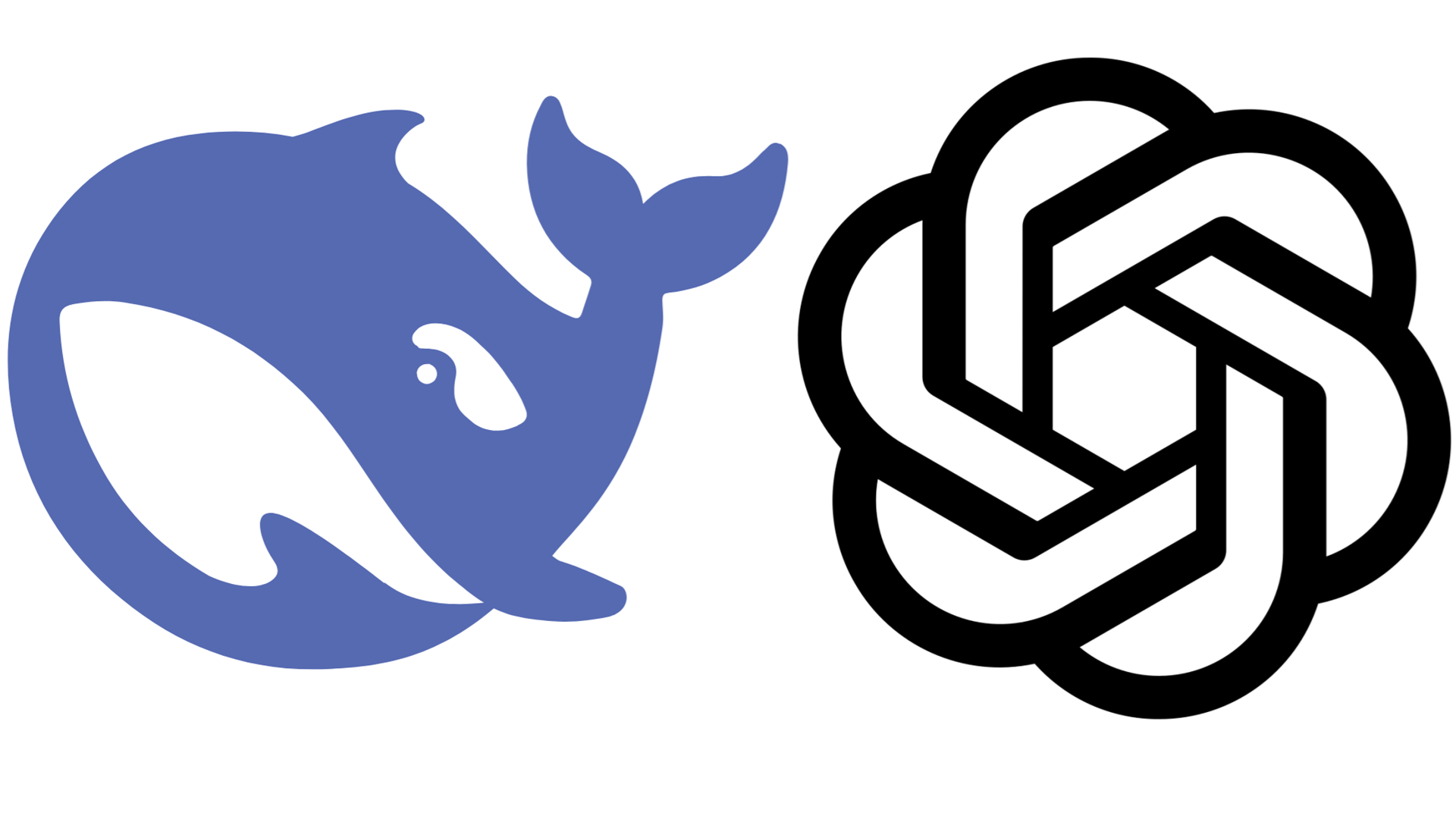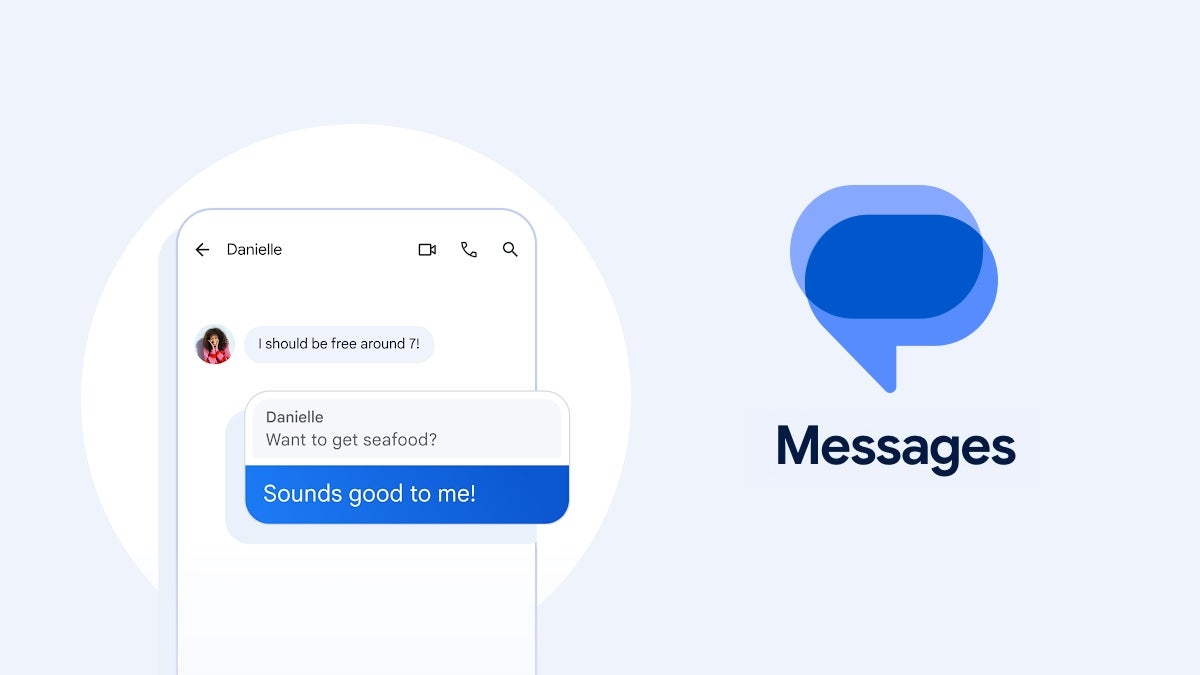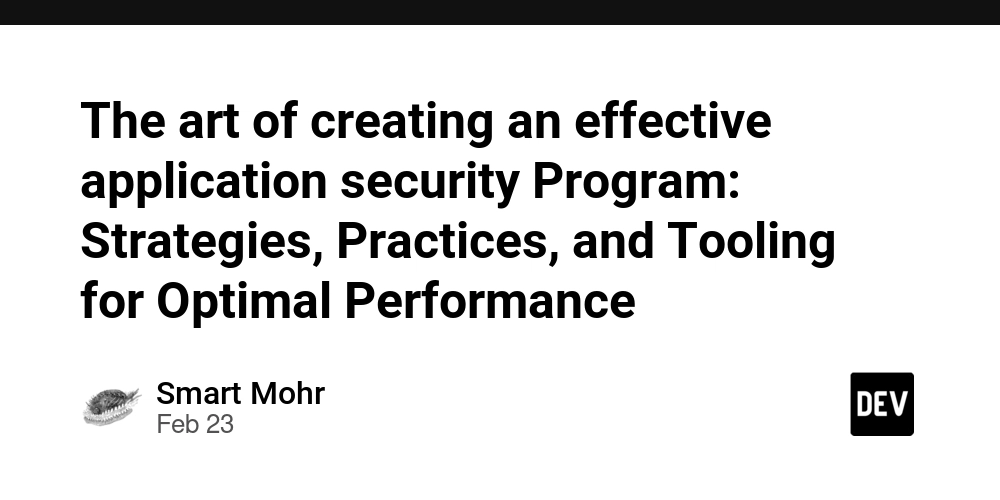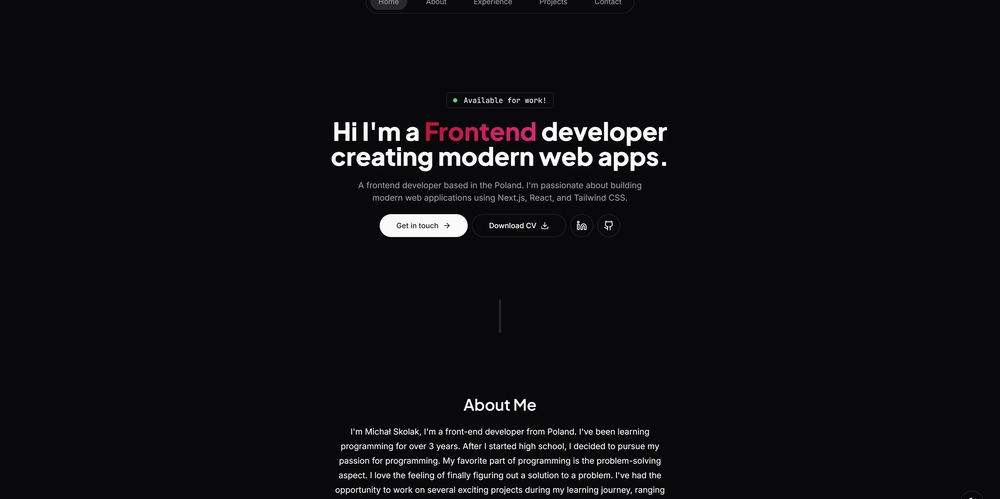20-Point Developer Checklist Before Starting Any Coding Project
Before diving into any coding project, whether it’s a personal side project, a startup idea, or a large-scale team collaboration, taking a few moments to plan ahead can make all the difference. As developers, we often get excited to start coding, but it's crucial to ensure we lay the right foundation for success. Below is a comprehensive checklist that will guide you through the essential steps to follow before starting your next coding project. By following these guidelines, you can avoid common pitfalls, save time, and increase the chances of delivering a project that not only works well but is maintainable and scalable in the long run. Define the problem clearly Every great project starts with a clearly defined problem. Take time to articulate exactly what you're trying to solve, and why it matters. Avoid jumping straight into coding. Instead, write down the problem statement as if explaining it to someone non-technical. If it's too vague or broad, break it down into smaller, more specific sub-problems. This ensures everyone on the team shares a unified understanding of the project's purpose. Identify the target users Your users should shape your decisions from day one. Are they technical or non-technical? Desktop users or mobile-first? What frustrates them about existing solutions, and what do they actually care about? Creating user personas or user stories can help you empathize with their needs and behaviors. Always remember: you're building for real people, not just for yourself. Set clear goals and deliverables Outline what success looks like. Are you building a prototype, an MVP, or a production-grade app? Define concrete deliverables and be specific about what will be included (and excluded) from the first release. Setting scope early helps prevent feature creep and keeps the project focused. Goals should be measurable so that you know when you've achieved them. Do competitive research Research existing tools, frameworks, or apps that solve similar problems. This gives you valuable insight into industry standards, best practices, and user expectations. Analyze what competitors do well, where they fall short, and what gaps you can fill. You may even discover that an open-source project already solves 80% of your problem — saving time and effort. Validate the idea Before investing significant time, validate whether the problem is worth solving. This could involve informal conversations with potential users, surveys, prototypes, or even landing pages to gauge interest. Validation reduces risk and ensures you're building something that people actually want or need. Decide on the tech stack Carefully choose technologies that are appropriate for the problem, scalable for the long term, and comfortable for the team to work with. Consider factors like speed, security, developer support, performance, and ecosystem maturity. Don’t just chase hype — pick tools that fit your project's unique needs and constraints. Assess existing solutions or libraries Open source is your friend. Check GitHub, npm, PyPI, or other registries for packages or libraries that might handle parts of your project — such as auth, form validation, or state management. Make sure to vet them properly: look at issues, update frequency, and community support. Reusing well-maintained libraries can cut development time significantly. Check for licensing constraints Ensure all external libraries and tools you use have licenses compatible with your project — especially if it's commercial. Avoid GPL or other restrictive licenses unless you're aware of their implications. Legal issues can be a major setback later in the lifecycle. Map out high-level architecture Before diving into code, create an overview of how your app will be structured. Define the system’s major components (frontend, backend, database, APIs, third-party services) and how they interact. Use diagrams if needed. This helps you spot design flaws early and makes onboarding new developers easier later. Define data models and storage needs Determine what kind of data your app will handle, how it will be structured, and where it will live. Will you use a SQL or NoSQL database? Do you need to handle files, images, or other media? Consider relationships between data, indexing needs, and access patterns. Planning your schema ahead of time can prevent costly refactors later. Create a task breakdown Break the project into clear, manageable tasks or user stories. Organize them by priority and dependencies. Tools like Jira, Trello, or GitHub Projects help keep things organized. This breakdown will serve as your roadmap and make it easier to track progress and assign responsibilities. Estimate time and resources Assign time estimates to each task based on complexity, team capacity, and historical data (if available). Be realistic — software always takes longer than expected. Factor in testing, reviews, refactoring, and delays. Also account for non-technical work like meetings, d

Before diving into any coding project, whether it’s a personal side project, a startup idea, or a large-scale team collaboration, taking a few moments to plan ahead can make all the difference. As developers, we often get excited to start coding, but it's crucial to ensure we lay the right foundation for success. Below is a comprehensive checklist that will guide you through the essential steps to follow before starting your next coding project. By following these guidelines, you can avoid common pitfalls, save time, and increase the chances of delivering a project that not only works well but is maintainable and scalable in the long run.
Define the problem clearly
Every great project starts with a clearly defined problem. Take time to articulate exactly what you're trying to solve, and why it matters. Avoid jumping straight into coding. Instead, write down the problem statement as if explaining it to someone non-technical. If it's too vague or broad, break it down into smaller, more specific sub-problems. This ensures everyone on the team shares a unified understanding of the project's purpose.
Identify the target users
Your users should shape your decisions from day one. Are they technical or non-technical? Desktop users or mobile-first? What frustrates them about existing solutions, and what do they actually care about? Creating user personas or user stories can help you empathize with their needs and behaviors. Always remember: you're building for real people, not just for yourself.
Set clear goals and deliverables
Outline what success looks like. Are you building a prototype, an MVP, or a production-grade app? Define concrete deliverables and be specific about what will be included (and excluded) from the first release. Setting scope early helps prevent feature creep and keeps the project focused. Goals should be measurable so that you know when you've achieved them.
Do competitive research
Research existing tools, frameworks, or apps that solve similar problems. This gives you valuable insight into industry standards, best practices, and user expectations. Analyze what competitors do well, where they fall short, and what gaps you can fill. You may even discover that an open-source project already solves 80% of your problem — saving time and effort.
Validate the idea
Before investing significant time, validate whether the problem is worth solving. This could involve informal conversations with potential users, surveys, prototypes, or even landing pages to gauge interest. Validation reduces risk and ensures you're building something that people actually want or need.
Decide on the tech stack
Carefully choose technologies that are appropriate for the problem, scalable for the long term, and comfortable for the team to work with. Consider factors like speed, security, developer support, performance, and ecosystem maturity. Don’t just chase hype — pick tools that fit your project's unique needs and constraints.
Assess existing solutions or libraries
Open source is your friend. Check GitHub, npm, PyPI, or other registries for packages or libraries that might handle parts of your project — such as auth, form validation, or state management. Make sure to vet them properly: look at issues, update frequency, and community support. Reusing well-maintained libraries can cut development time significantly.
Check for licensing constraints
Ensure all external libraries and tools you use have licenses compatible with your project — especially if it's commercial. Avoid GPL or other restrictive licenses unless you're aware of their implications. Legal issues can be a major setback later in the lifecycle.
Map out high-level architecture
Before diving into code, create an overview of how your app will be structured. Define the system’s major components (frontend, backend, database, APIs, third-party services) and how they interact. Use diagrams if needed. This helps you spot design flaws early and makes onboarding new developers easier later.
Define data models and storage needs
Determine what kind of data your app will handle, how it will be structured, and where it will live. Will you use a SQL or NoSQL database? Do you need to handle files, images, or other media? Consider relationships between data, indexing needs, and access patterns. Planning your schema ahead of time can prevent costly refactors later.
Create a task breakdown
Break the project into clear, manageable tasks or user stories. Organize them by priority and dependencies. Tools like Jira, Trello, or GitHub Projects help keep things organized. This breakdown will serve as your roadmap and make it easier to track progress and assign responsibilities.
Estimate time and resources
Assign time estimates to each task based on complexity, team capacity, and historical data (if available). Be realistic — software always takes longer than expected. Factor in testing, reviews, refactoring, and delays. Also account for non-technical work like meetings, documentation, and deployment.
Prepare version control
Set up a Git repository early with a sensible branching strategy (e.g., Git Flow, trunk-based). Define commit message conventions, merge rules, and review workflows. Version control isn’t just for saving code — it helps manage collaboration, track bugs, and roll back mistakes safely.
Set up your development environment
Ensure every team member can run the project locally with minimal setup. Use tools like Docker, Makefiles, or setup scripts to streamline the process. Make sure environments are consistent to avoid "it works on my machine" issues.
Plan for testing and QA
Decide on your testing strategy early. Will you write unit tests, integration tests, E2E tests, or all of the above? Choose testing frameworks appropriate to your stack. Also, plan for manual QA — especially for edge cases or UX feedback. Good testing saves countless hours of debugging later.
Identify potential bottlenecks and risks
Proactively think about what could slow you down. Is there a new tool the team isn’t familiar with? A risky dependency? A tight deadline? List potential obstacles and create contingency plans. It’s better to address risks upfront than to be surprised mid-project.
Create a communication plan
Define how and when the team will communicate. Will you have daily standups? Weekly retros? Use Slack, Discord, or email? Clear communication prevents misunderstandings and keeps everyone in sync. Don’t underestimate the value of structured, async-friendly communication — especially in remote teams.
Write initial documentation
A well-documented project starts from the beginning. Your README should explain what the project is, how to set it up, and how to contribute. As the project grows, documentation should include architecture decisions, API specs, coding standards, and more. Clear docs speed up onboarding and collaboration.
Think about scalability and maintainability
Codebases grow. Features multiply. Teams change. Build your project so it’s easy to scale — both in performance and in complexity. Modular architecture, reusable components, and clean code principles make life easier down the road. Future-you (and your teammates) will thank you.
Get stakeholder approval
Before you write a single line of production code, get buy-in from all decision-makers. This might be your boss, client, product manager, or even just your future self. Share the plan, the timeline, and expectations. If stakeholders are aligned now, you’ll avoid painful surprises later.
By carefully following this checklist, you’re setting yourself up for a more structured, efficient, and successful development process. These steps help you avoid unnecessary roadblocks, foster better communication within your team, and ensure that you're building something truly valuable for your users. Remember, good planning doesn’t just save time in the beginning — it sets the stage for a smoother development cycle and a more polished final product. Now, you can focus on writing great code, knowing that the groundwork has already been laid for a successful project.
If this article helped, you can support more like it at: buymeacoffee.com/hexshift









































































































































































![[The AI Show Episode 144]: ChatGPT’s New Memory, Shopify CEO’s Leaked “AI First” Memo, Google Cloud Next Releases, o3 and o4-mini Coming Soon & Llama 4’s Rocky Launch](https://www.marketingaiinstitute.com/hubfs/ep%20144%20cover.png)



















































































































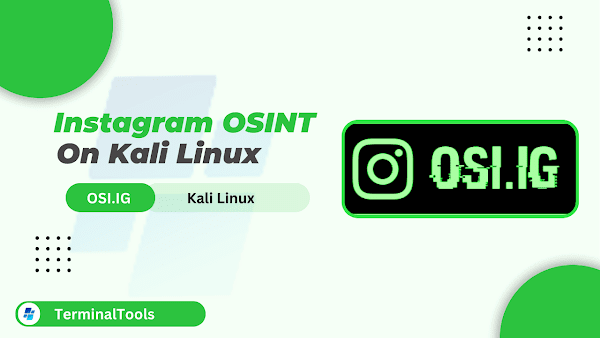















![From fast food worker to cybersecurity engineer with Tae'lur Alexis [Podcast #169]](https://cdn.hashnode.com/res/hashnode/image/upload/v1745242807605/8a6cf71c-144f-4c91-9532-62d7c92c0f65.png?#)























![BPMN-procesmodellering [closed]](https://i.sstatic.net/l7l8q49F.png)




















































































.jpg?#)
.jpg?#)
































































































































![CarPlay app with web browser for streaming video hits App Store [U]](https://i0.wp.com/9to5mac.com/wp-content/uploads/sites/6/2024/11/carplay-apple.jpeg?resize=1200%2C628&quality=82&strip=all&ssl=1)
![What’s new in Android’s April 2025 Google System Updates [U: 4/21]](https://i0.wp.com/9to5google.com/wp-content/uploads/sites/4/2025/01/google-play-services-3.jpg?resize=1200%2C628&quality=82&strip=all&ssl=1)












![Apple Releases iOS 18.5 Beta 3 and iPadOS 18.5 Beta 3 [Download]](https://www.iclarified.com/images/news/97076/97076/97076-640.jpg)
![Apple Seeds visionOS 2.5 Beta 3 to Developers [Download]](https://www.iclarified.com/images/news/97077/97077/97077-640.jpg)
![Apple Seeds tvOS 18.5 Beta 3 to Developers [Download]](https://www.iclarified.com/images/news/97078/97078/97078-640.jpg)
![Apple Seeds watchOS 11.5 Beta 3 to Developers [Download]](https://www.iclarified.com/images/news/97079/97079/97079-640.jpg)



















